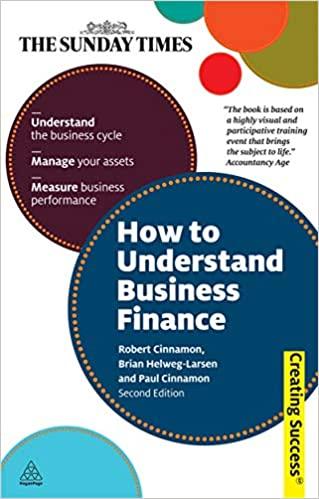Question
The role Decisions Trees play in problem-solving is well covered in the textbook, and many practical examples are available on-line. In this unit we will
The role Decisions Trees play in problem-solving is well covered in the textbook, and many practical examples are available on-line. In this unit we will use decision trees to analyze a common decision problem.
Scenario
You are a lawyer and one of your clients was hit by a car while crossing the street at a crosswalk. Her injuries required medical treatment and her hospital stay incurred $10,000 in medical expenses. Although the long term prognosis is for a full recovery, there is some chance of permanent damage. Your client has been advised by medical staff, if her pain continues, to return for further examination.
Just after leaving the hospital, your client received an offer from the driver's insurance company for $100,000 to settle any claims arising from the accident.
If she accepts the offer she will receive the $100,000 immediately and will be required to sign away any rights to more damages in the future. If she refuses the offer, she can sue and take the insurance company to trial. Her trial costs will be $10,000. The probability that she will win in court is 90%. If she wins, there is a 20% probability she will be awarded $400,000 and an 80% probability she will be awarded $25,000 in damages.
For your initial posting, focus on the following questions:
Draw the decision tree for the problem as described. What recommendation would you give your client? Should she accept the offer of $100,000 or sue the insurance company in court for the possibility of a larger settlement? Justify your answer using the decision tree. How, if at all, would your recommendation change if you allow for the fact that your client is risk averse (that is, she prefers lower risk)?
Consider the same situation as 1), except that there are now two players: you client and the insurance company. The insurance company starts by deciding how large a settlement to offer; $50,000, $100,000, or $150,000. You then decide whether to accept the offer or challenge in court. Use the idea of zero-sum game to determine what offer the insurance company will make. Assume the trial costs for the insurance company are $10,000 as well. Justify your answer using a new decision tree that corresponds to this problem.
What factors might you also consider when faced with these two scenarios?
Step by Step Solution
There are 3 Steps involved in it
Step: 1

Get Instant Access to Expert-Tailored Solutions
See step-by-step solutions with expert insights and AI powered tools for academic success
Step: 2

Step: 3

Ace Your Homework with AI
Get the answers you need in no time with our AI-driven, step-by-step assistance
Get Started


